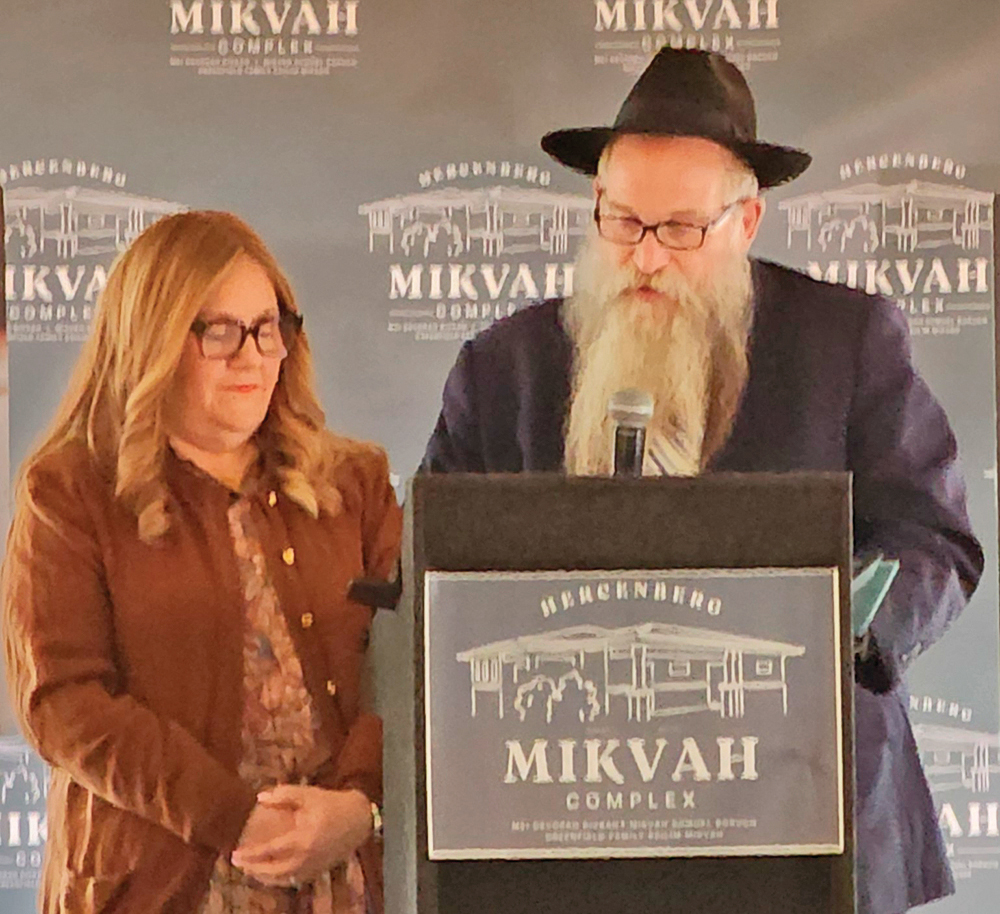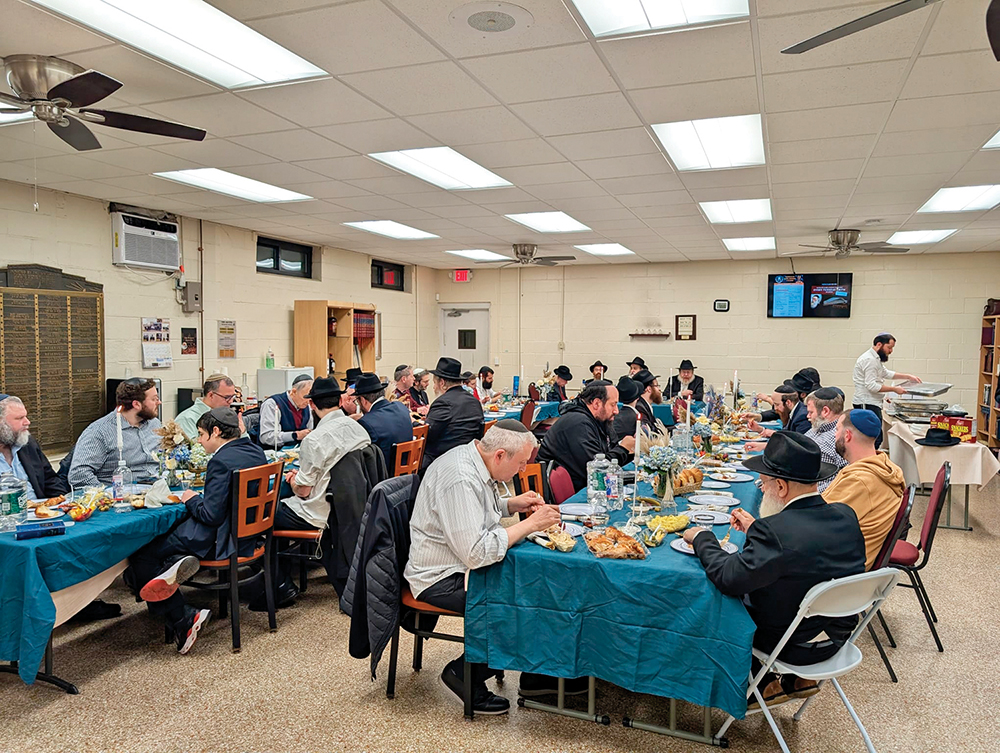Part IX
Why Was the Vaad Involved in Immigration?
Some American Jews wanted to know why Stephen Klein and Irving Bunim insisted that it was important for the Vaad to play a key role in immigration and why the JDC didn’t assume that role.
Rabbi B. Orlansky, the former head of the yeshiva in Radin, and a refugee in Siberia, Poland and France, said that just as a person has a father and a mother, so did the Orthodox Jewish community. The American Jewish Joint Distribution Committee was the father and the Vaad was the mother. Jews in Europe, including those who headed the relief agencies, did not ask these questions because the answer was obvious. They understood that a single agency could not respond to the needs of all DPs [displaced persons] and that the Vaad had experience in dealing with specific issues facing observant Jews.
Rabbi Orlansky pointed to the success of the Brichah, the underground mass migration of Jews from Eastern Europe (between 1944 and 1948) to Palestine. As historian Yehuda Bauer noted, about 250,000 Jews fled Eastern Europe, through the Brichah or affiliated programs. It is estimated that 170,000 were from Poland, 35,000 from Romania and the rest mostly from Hungary and Czechoslovakia. These Orthodox Jews, who weren’t willing to alter their traditional, distinctive appearance and dress, were not able to escape through the Brichah because they would endanger the mission.
Another reason for the Vaad’s insistence became obvious during Rabbi Eliezer Silver’s visit to Poland in July 1946. He was on a fact-finding mission for the Vaad to offer financial support and inspiration to the She’erith Hapleitah and Jews in the Middle East (Holland, Belgium, France, Czechoslovakia, Poland, Germany, Austria, Switzerland, Italy, Egypt and Palestine). Somehow, he convinced the Polish government to give him 10,00 visas for rabbis and yeshiva students unwilling to live under Communist rule.
At a meeting with Polish President Boleslaw Bierut on July 10th, Rabbi Aaron Rakeffet-Rothkoff quoted Rabbi Silver as having said: “It is better for you [the Poles] to rid yourself of these bothersome and stubborn Jews once and for all…. Issue passports and exit permits to all Jews remaining in your land, and try to solve at the same time the problem of Polish citizens who were exiled in Siberia. My advice is that these exiles be returned to Poland on condition that they leave here as soon as possible. I promise you that the Czechoslovakian government will open their borders to the Polish Jews and allow them to pass through to Palestine.”
Stuttgart
In October 1947, Stephen Klein met with Dr. Samuel Schmidt in New York to discuss sending someone to Germany to assume responsibility for immigration work. Klein was convinced Rabbi Baruch was “not interested” in this area “and that many hundreds of people” could be “brought out of Germany if the proper person” were in charge.
At that time, the American consulates in Munich and Frankfurt were overwhelmed with people trying to obtain visas. Vaad requests were so backlogged, it decided to use the consulate in Stuttgart, located in a villa on a hill on the outskirts of the city. Since there were no connecting flights to Stuttgart, and the Autobahn was under construction because of the damage caused by American bombers, the relative inaccessibility of the city and the villa probably contributed to its reduced traffic.
To expedite the work in Stuttgart, Rabbi Baruch hired Isabel Jacobs, a young Jewish woman from England, to manage the office. She processed the paperwork and secured the documents proving that applicants had contracts with yeshivos, synagogues or institutions guaranteeing employment in America. Obtaining these documents became a difficult undertaking. Immigration guidelines required an exhaustive family history, often entailing an investigation by indigenous personnel. Each application had to be accompanied by a fee of approximately $10.00, a birth certificate and ordination papers reflecting the applicant’s student status.
To further complicate matters, the consuls in Stuttgart were exceptionally difficult. Dell Topasky and Reed Robinson utilized every regulation and tactic possible to delay and reject applications. They were adherents of Breckinridge Long’s antisemitic policies, and worked to make Baruch’s and his colleagues’ lives miserable. As assistant secretary of state, Long supervised the visa division, which directed the issuing of visas at American consulates abroad. When problems developed during an interview, Jacobs would invariably contact Baruch and inform him to come to Stuttgart.
Applicants were summoned to appear before the consuls for interrogation via an interpreter. Though these individuals had all the proper documentation, Topasky and Robinson insisted on testing them on their knowledge of the Bible. Baruch asked the consuls to use one of the rabbis from the DP camps and a Jewish military chaplain to question an applicant and verify his knowledge of religious texts, but they refused.
A typical Robinson response to a visa application for a Vaad applicant read: “Visas have been refused and the applications have been canceled because it did not appear that Rabbi… is a nonquota immigrant…The claimant had placed on file an offer of employment extended to him by Torah Umesorah under the terms of which he was to be employed as a rabbi and a religious teacher.” An investigation [has] revealed that “Torah Umesorah is not in itself an institution of learning or a religious congregation … within the meaning of the immigration statute.” Furthermore, the offer of employment extended to the rabbi expected him to act as “both a minister of religion and an instructor …The Rabbi’s acceptance would seemingly prevent him from entering the U.S. solely for the purpose of carrying on the vocation of a minister of religion or solely for the purpose of carrying on the vocation of a professor.”
*These are excerpts from Alex Grobman, “Battling For Souls: The Vaad Hatzala Rescue Committee in Post-War Europe” (Jersey City, New Jersey: KTAV, 2004).
Dr. Alex Grobman is senior resident scholar at the John C. Danforth Society, member of the Council of Scholars for Peace in the Middle East.













